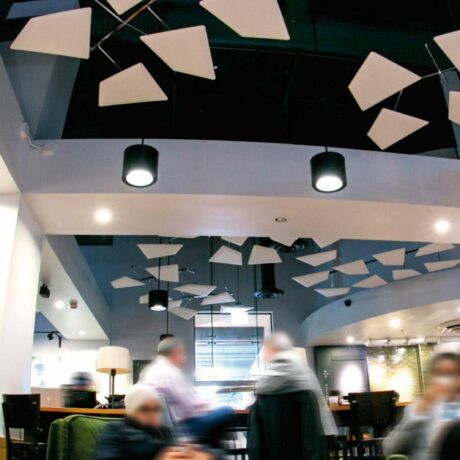
Did you know that Uber hasn’t earned a profit since 2018? As a matter of fact, the only year Uber has ever reported a profit was 2018. After Amazon became a publicly traded company in 1997, it lost $2.8 billion over the next four years. During its first five years of operation starting in 1971, FedEx lost millions of dollars because fuel prices shot up unexpectedly. You might be surprised to learn that Airbnb, ESPN, Netflix, Peloton, and Turner Broadcasting System (which fathered CNN) operated with major losses several years after they started—and some of these newer companies have yet to report a profit. Despite these massive failures, these companies didn’t sink like the Titanic. Instead, they soared like astronauts. Why?
In large part, I think it may have been because of an accounting principle called net operating loss (NOL), which allows companies to apply their business losses against their previous or future years of income. A January 13, 2022 Tax Foundation article by Timothy Vermeer entitled “Net Operating Loss Provisions: State Treatment and the Economic Benefits” gave me a lot of food for thought, and in this article, I’ve drawn on his data about federal vs. state NOL provisions.
NOLs and Federal Law
According to federal law, corporations can apply past or current losses against future tax liability (known as carryforwards), but the loss can’t shrink any future year’s tax liability by more than 80 percent. Previously, businesses could apply losses to tax liabilities from the two previous years (known as carrybacks), and then get a refund for the difference. This provided liquidity if a business operated at a loss, enabling it to smooth its income across up years and down years. Before the Tax Cuts and Jobs Act (TCJA) of 2017, business could carry losses forward for up to 20 years.
But under the Tax Cuts and Jobs Act (TCJA) of 2017, carrybacks were eliminated; in its place, an 80 percent cap was introduced, in exchange for eliminating the 20-year limit on the number of years losses could be carried forward. Lawmakers lifted the 20-year limit to pay for other provisions of the TCJA, such as the corporate tax rate reduction.
NOLs and State Law
Currently, 19 states (Alaska, Colorado, Delaware, Florida, Georgia, Hawaii, Kansas, Kentucky, Maine, Maryland, New Mexico, North Dakota, Oklahoma, South Carolina, South Dakota, Utah, Virginia, West Virginia, and Wyoming) and the District of Columbia have adopted federal NOL provisions. Like federal law, they uphold:
1) the annual loss deduction cap (meaning that losses carried forward can’t reduce current tax liability by more than 80 percent);
2) the unlimited number of years you can carry forward losses; and
3) the assertion you can’t carry losses back to offset previous years’ tax liabilities.
Meanwhile, 13 states (Arizona, Connecticut, Idaho, Indiana, Iowa, Louisiana, Massachusetts, Mississippi, Missouri, Nebraska, New Jersey, New York, and Wisconsin) diverge from federal provisions by limiting carryforward years to 20, with no cap on loss deduction. Businesses can apply losses to offset up to 100 percent of the year’s tax liability for 20 years if they have enough losses to carry forward.
But 12 states deny the 20-year threshold. In five states—Alabama, Minnesota, North Carolina, Oregon, and Tennessee—losses can be to be carried forward for up to 15 years. While Illinois has a 12-year stricture. Michigan, Montana, New Hampshire, and Vermont allow 10 years. Arkansas permits eight years; and for Rhode Island, the cutoff point is five years.
In two states, there are limits to the amount of loss a company can carry forward. In Pennsylvania, a firm’s total carryforward amount is limited to 40 percent of the loss, deductible over a maximum of 20 years. In New Hampshire, the carryforward amount of $10 million is deductible over a maximum of 10 years.
Even though the federal code has removed carrybacks, five states allow them. In Idaho, you can carry back up to $100,000 of losses up to two years. In Mississippi and Missouri, you can claim unlimited losses to offset up to two previous years of tax liability. In New York, you can carry back unlimited losses, but you can apply the carryback amount to any tax liability in the previous three years. While Montana also upholds a three-year carryback rule, it only allows $500,000 of losses to be applied over those three years.
Because of concerns about revenue losses due to the COVID-19 pandemic, California has suspended its carryforward provisions for three years. Despite the fact the Golden State has posted extraordinary surpluses, its NOL suspension is still in force. Because profitability doesn’t factor into gross receipts taxation, four states (Nevada, Ohio, Texas, and Washington) lack NOL provisions because they impose a gross receipts tax in place of a corporate income tax.
Let’s Help Small Businesses
Small businesses are the backbone of America. It’s well known they provide more jobs than Big Business. But small businesses are disproportionately handicapped by the divergence in tax law regarding NOLs between the federal tax code and state regulations. Because of their limited financial resources, small businesses are disadvantaged regarding liquidity, and NOLs can have a stunning effect on the cash flow of small businesses—especially now, when they’re especially under pressure from the pandemic.
If states want to encourage entrepreneurs and set the stage for economic growth, they should consider expanding their NOL requirements. While California should revert to its previous NOL provisions at once, states that limit NOL provisions should adopt the federal system. A level playing field will make advancement available to everyone.
While loss carrybacks have been excluded from the federal code, they can help to even out income through good years and bad, and states should consider their inclusion. If states choose not to conform to federal provisions, they should use the legacy federal limit of 20 years of uncapped carryforwards. An indefinite carryforward period is ideal, because it provides maximum flexibility to businesses. A taxpayer should be able to carry forward unlimited losses. If a firm is making investment decisions after emerging from possibly years of losses, it could have its options limited even by a relatively limited tax liability, like an 80 percent cap on loss carryforwards.
I’ve been a voice for national tax reform my entire life. In 2017, I was appointed by Vice President Mike Pence to the U.S. Tax Roundtable to work with Congress to facilitate the passage of the Tax Cuts and Jobs Act of 2017 (which I did). And I strongly believe that it’s important of the future of America’s small businesses that NOL provisions be broadened at both the federal and state level, especially during this devastating pandemic.




